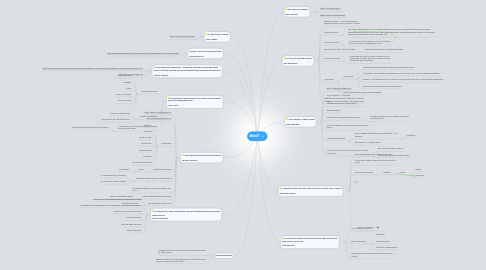
1. Management is dead. How Kanban can help transitioning into leadership? Alexis Nicolas Bruno Chassagne
1.1. http://prezi.com/3v8lgcebkw4e/management-is-dead/
1.2. “Management is doing things right; leadership is doing the right things.”
1.3. Use slack to continuous learning
1.4. self management
1.5. take the right decisions
1.6. create teamspirit
2. It's the system, Stupid! John Seddon
2.1. http://vimeo.com/30641582
3. a lean approach to portfolio management Thomas Lissajoux
3.1. http://twitpic.com/6v03nb/full
3.2. http://vimeo.com/30631223
3.3. 7 principles
3.3.1. integrity
3.3.2. learning
3.3.3. deliver sooner
3.3.4. decide later
3.3.5. remove waste
3.3.6. empower
3.3.7. see the whole picture
3.4. investement themes
3.4.1. epics
3.4.1.1. user stories
3.5. empower stakeholders to see the whole!
3.5.1. no power games on projects
3.5.2. no 'my project pisses further'
3.6. use bubble diagrams to show Strategy, CoD, TCO,...
3.7. Story mapping: the new backlog
3.7.1. need to investigate further
3.8. fast feedback on epic level
3.8.1. indicators can help
4. interesting books
4.1. Managing to Learn: Using the A3 management process by John Shook
4.2. Waltzing With Bears: Managing Risk on Software Projects by Tom Demarco, Timothy Lister
5. Best practices and experiences for using Lean/Kanban to scale to the Enterprise level Yuval Yeret
5.1. classes of services
5.1.1. fixed date work
5.1.2. expedite
5.1.3. hotfix
5.1.4. Proof of Concept
5.1.5. Normal project
5.1.6. ...
5.2. classes of treatment
5.2.1. how clean should it be
5.2.2. how route it through the system
5.3. if the process is still the same after x months: innovation stopped!
5.3.1. you're stealing a salary from the company
6. Lean Adaptive Management - Achieving complex business goals with end-to-end flow, tailored project management and organizational maturity Patrick Steyaert
6.1. http://www.slideshare.net/TeamProsourceEU/presentation-lean-adaptive-management-lean-kanban-benelux-2011
6.2. http://vimeo.com/30641159
7. Kanban - when is it not appropriate? David Anderson
7.1. http://agilemanagement.net/images/uploads/KanbanWhenIsItNotAppropriate.pdf
8. Is It Time to Rethink Deming? Don Reinertsen
8.1. statistic control == outcome between upper and lower control limits (3 x sigma)
8.2. Deming's funnel
8.2.1. The funnel experiment is a visual representation of a process. It shows that a process in control delivers the best results if left alone. The funnel experiment shows the adverse effects of tampering with a process through the four setting rules.
8.3. Economical view
8.3.1. If it's cheaper to fix a problem, fix it! no matter if it had a common or exceptional cause
8.4. WIP limit in kanban: M/M/1/K queue
8.4.1. prevent the system to go hit the boundaries
8.5. Cult of prevention
8.5.1. minimizing the cost of failure is always a local optimization: better find and fix problems than preventing them to happen
8.6. John Boyd
8.6.1. OODA loop
8.6.1.1. Observation: the collection of data by means of the senses
8.6.1.2. Orientation: the analysis and synthesis of data to form one's current mental perspective
8.6.1.3. Decision: the determination of a course of action based on one's current mental perspective
8.6.1.4. Action: the physical playing-out of decisions
8.6.2. timing is important: speed in feedbackloops
8.7. Statistics are important, so should be learned better!
9. Using the Mutual Learning Model to achieve Double Loop Learning Benjamin Mitchell
9.1. learning: detection and correction of errors
9.2. errors: diff between expected result and actual result
9.3. double loop learning:
9.3.1. Mindset
9.3.1.1. action
9.3.1.1.1. match
9.3.1.1.2. mismatch
9.4. ladder of inference
10. Level demand, balance workload and manage schedule risk with Classes of Service Mike Burrows
10.1. A3 / Aligment approach
10.2. types of projects
10.2.1. fixed date
10.2.2. normal projects
10.2.3. long term improvements
10.3. embrace diversity: individual approach for each project
11. Lean-Kanban Is About People Alan Shalloway
11.1. http://vimeo.com/30627125
11.2. it's not people <-> process
11.3. catch22: thrust needed to get things done, getting things done creates thrust
11.4. design patterns
11.5. which part of the airplane actually flies
11.5.1. we need to look at the complete system, not individual parts
11.6. If you put people in a good position, they will do good
11.7. change management
11.7.1. small changes (continuous improvements) -> no problem
11.7.1.1. KANBAN!
11.7.2. big changes -> fight or flight
11.8. Next time you are in a situation where you have no control?
11.8.1. see if you can make it worse!
11.8.2. this means that you still have control
